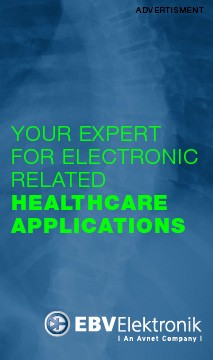Particularly in the field of patient monitoring, experts see a large market and a wide range of possibilities for the Internet of Things. By linking patients, doctors and medical equipment, the goal is to reduce costs in the healthcare sector and improve patient care – even if patients are no longer being monitored constantly in hospital, but at home in everyday life.
With a total of 6,000 patients, the UK Department of Health has carried out the largest study on the effectiveness of telemedicine in the world to date. The initial results of the study are promising: the study showed that, for chronically ill patients using telemedicine platforms, the mortality rate fell by 45 percent, emergency admissions fells by 20 percent and time spent in hospital was shortened by 14 percent. This study therefore gives a clear signal for modern healthcare systems all over the world that structures should be changed to focus on telemedicine and home healthcare. “There’s no other way to improve the care provided for chronically ill patients outside of hospital, while at the same time getting the costs of the healthcare system under control,” states Jochen Franke, Managing Director of Philips Healthcare Germany.
Relieving the strain on the healthcare system
Caring for chronically ill patients cost the UK healthcare system millions every year. Emergency admissions or stays in hospital are particularly cost-intensive. The initial results of the study indicate that telemedicine could be a way of significantly reducing these costs. It could help relieve the strain on the healthcare system over the long-term, without patients having to compromise on care.
Philips offers the telemedicine platform Motiva, for example, which can be used to monitor chronic illnesses. The system connects the patient with their specialist medical personnel via a network connection on their TV at home. It evaluates the vital parameters, such as weight and blood pressure, recorded using wireless equipment and communicates any potential problems directly to the specialist personnel. This means that patients are given an early warning of changes to their state of health, enabling them to plan the further steps in their treatment with their team of carers directly on the TV.
Measuring electronics made smaller and more efficient
Mobile measurement devices are at the heart of this type of telehealth solution: If the devices are small enough, the patient can carry them around with them if necessary, enabling their vital parameters to be monitored at all times. “From health care to smart buildings, adding sensors to our environment will support and enhance our day-to-day life. Applications are numerous and restricted mainly by our imagination and by the power consumption of the mostly battery-operated sensor devices,” explains Harmke De Groot, Program Director Ultra Low Power Circuits at Holst Centre/imec. The Holst Centre is an independent research centre, which among other things develops technologies for wireless-based autonomous measured value transmitters. The centre was founded by imec from Belgium, one of the leading institutes in the world in the field of nano-electronic research and the Dutch research organisation TNO. “The radio often consumes between 50-85% of the overall power consumption of a sensor system. And for autonomous devices, with only a small battery and thus limited battery energy, the power consumption of commercially available short-range radios is rather high (>15mW DC power).”
Imec and Holst Centre therefore developed an extremely energy-efficient multi-standard wireless solution. With Bluetooth Low Energy, ZigBee and Medical Body Area Networks, it supports the most frequently used wireless standards for mobile sensors around the world. The transmitter is up to five times more energy-efficient than the current Bluetooth Low Energy solutions. This means that the entire measurement device can be made more autonomous or additional functions implemented. This also enables the size of the battery to be reduced, so that the entire device can be made smaller – which leads to a significant increase in comfort in portable systems, for example.
The start of a new movement
These small, portable and easy to use measuring tools for monitoring vital parameters not only form the basis of a “professional healthcare sector” today, but are also at the heart of the so-called “Quantified Self” movement: The common interest of the members lies in recording and using information on health, behaviour, environment and other personal matters with the goal of gaining know-ledge and changing behaviour. A pioneer in this field is the French company Withings. The company develops intelligently linked devices and corresponding user-friendly Apps, which can help the user to improve their health and wellbeing. For example, Withings launched the Smart Body Analyzer on the market at the start of the year, which completely re-invents the bathroom scales: The first set of scales to be connected to the Internet now measures heart rate and the air quality in the room in addition to weight and percentage body fat. Withings also presented the Activity Tracker Withings Pulse last month. It is half the size of a matchbox and measures heart rate, steps and calories, the distance covered, altitude and quality of sleep. Cedric Hutchings, CEO and co-founder of Withings, explains: “The Quantified Self movement lifts the field of healthcare to a new stage of development. The Withings solutions give users control over their own health and help create a more trusting relationship between patients and health experts.”



